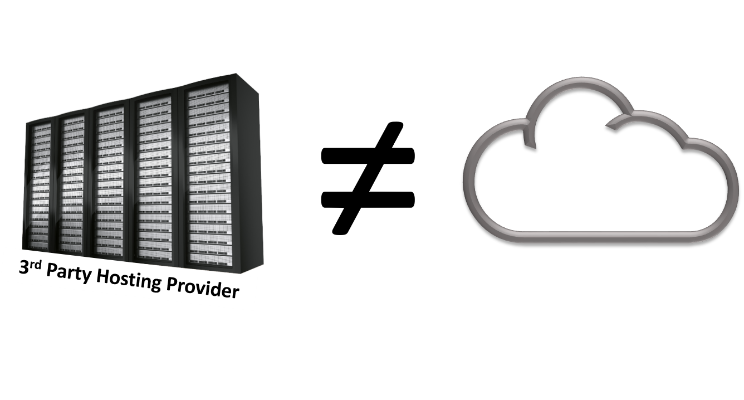
I recently asked an IT executive “What is your cloud strategy for your ERP application?” I was expecting him to answer with one of the common responses?
- We are evaluating SaaS ERP,
- We are looking to move our existing ERP application to cloud infrastructure or
- We do not have a strategy.
Instead, he replied, “We have been in the Cloud for over 10 years”. I was taken aback as 10 years ago the cloud was an emerging concept, with an emphasis on the word ‘concept’. It then dawned on me that many people confuse the cloud with hosting by a 3rd party managed services provider (MSP).
MSP’s, which have been around for over 10 years, are an excellent outsourced alternative to the traditional in-house data center. These providers will typically host and manage an Oracle ERP application in their data center for a monthly fee. By relieving the infrastructure burden, MSP’s have helped many corporations get out of the data center management business and focus on their actual business.
The cloud, or cloud hosting, is slightly different than hosting with a data center-based MSP. The difference is in the use of cloud infrastructure. Yes, it is true that behind the scenes the cloud is essentially data center-based technology. However, the architecture is designed to be elastic on demand.
Two use cases highlight the value of elasticity. First consider a typical ERP implementation including three environments, Production, Test and Development. During an initial implementation or major upgrade, the Test and Development environments are heavily used. However, most of the time (estimates of up to 70%) these environments sit idle. With the cloud, these environments can be shut down and not cost the organization.
Second, consider a seasonal business that has peaks and valleys in the use of the ERP application. Or any organization, that increases utilization during month-end. Traditional hosting providers have to size their customer’s hardware requirements to accommodate peak performance. Alternatively, the cloud is elastic. While a sizing exercise still occurs, it is done for average performance requirements. It then expands to peak requirements without the incremental cost.
In summary, flexibility is the clear difference between the traditional data center-based hosting model and the cloud. Does this mean you should abandon the use of an MSP if you go to the cloud? The answer is ‘no’. Instead, you should look for an MSP that will host your ERP application in the cloud instead of their traditional static data center.
Contact us to talk about how you can maximize your flexibility with an MSP.
